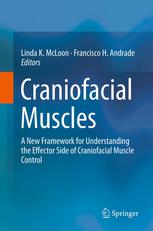

Most ebook files are in PDF format, so you can easily read them using various software such as Foxit Reader or directly on the Google Chrome browser.
Some ebook files are released by publishers in other formats such as .awz, .mobi, .epub, .fb2, etc. You may need to install specific software to read these formats on mobile/PC, such as Calibre.
Please read the tutorial at this link: https://ebookbell.com/faq
We offer FREE conversion to the popular formats you request; however, this may take some time. Therefore, right after payment, please email us, and we will try to provide the service as quickly as possible.
For some exceptional file formats or broken links (if any), please refrain from opening any disputes. Instead, email us first, and we will try to assist within a maximum of 6 hours.
EbookBell Team

4.0
6 reviewsOf the approximately 640 muscles in the human body, over 10% of them are found in the craniofacial region. The craniofacial muscles are involved in a number of crucial non-locomotor activities, and are critical to the most basic functions of life, including vision, taste, chewing and food manipulation, swallowing, respiration, speech, as well as regulating facial expression and controlling facial aperture patency. Despite their importance, the biology of these small skeletal muscles is relatively unexplored. Only recently have we begun to understand their unique embryonic development and the genes that control it and characteristic features that separate them from the skeletal muscle stereotype.
This book is the most comprehensive reference to date on craniofacial muscle development, structure, function, and disease. It details the state-of-the-art basic science of the craniofacial muscles, and describes their unique response to major neuromuscular conditions. Most importantly, the text highlights how the craniofacial muscles are different from most skeletal muscles, and why they have been viewed as a distinct allotype. In addition, the text points to major gaps in our knowledge about these very important skeletal muscles and identified key gaps in our knowledge and areas primed for further study and discovery.